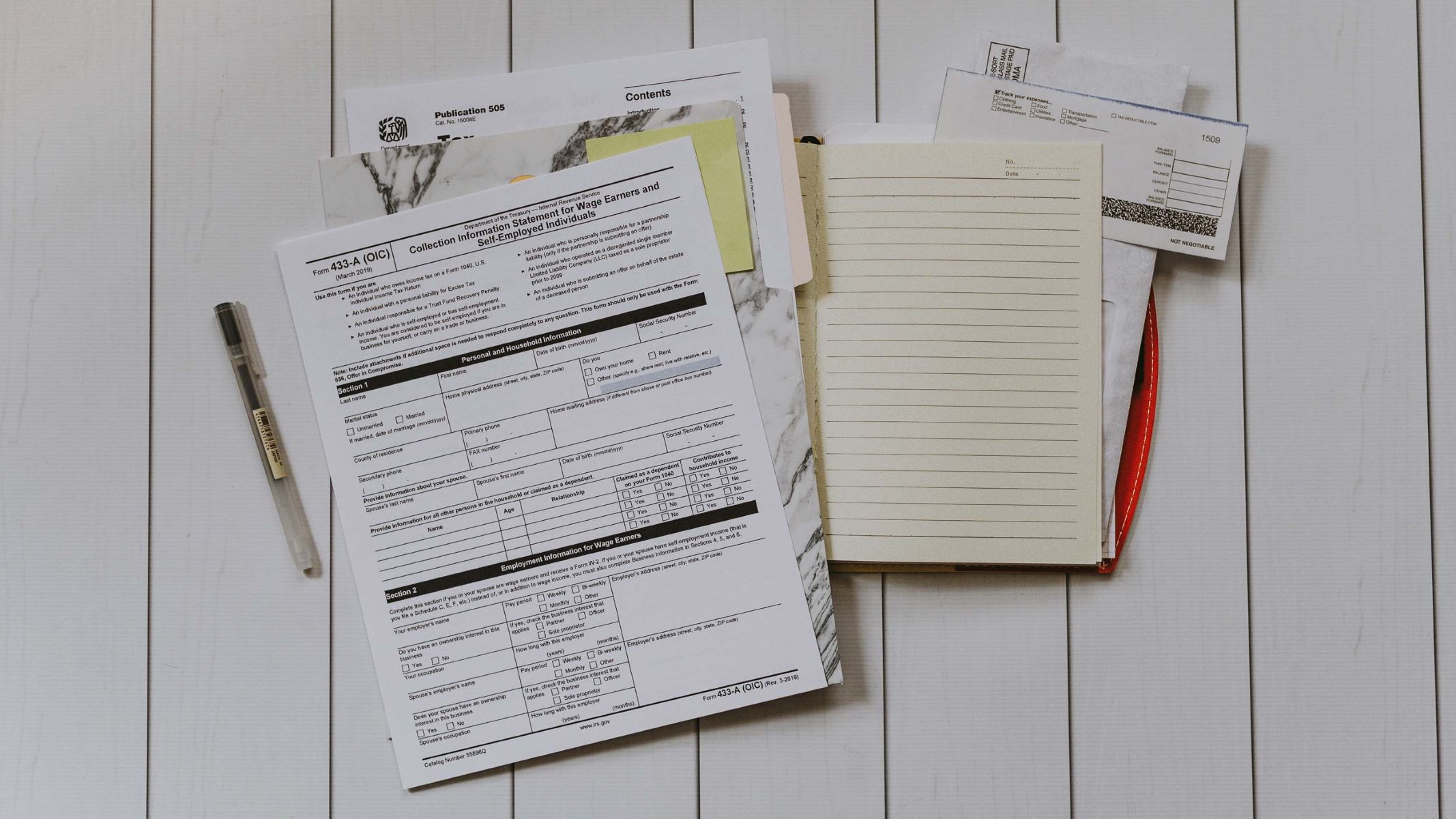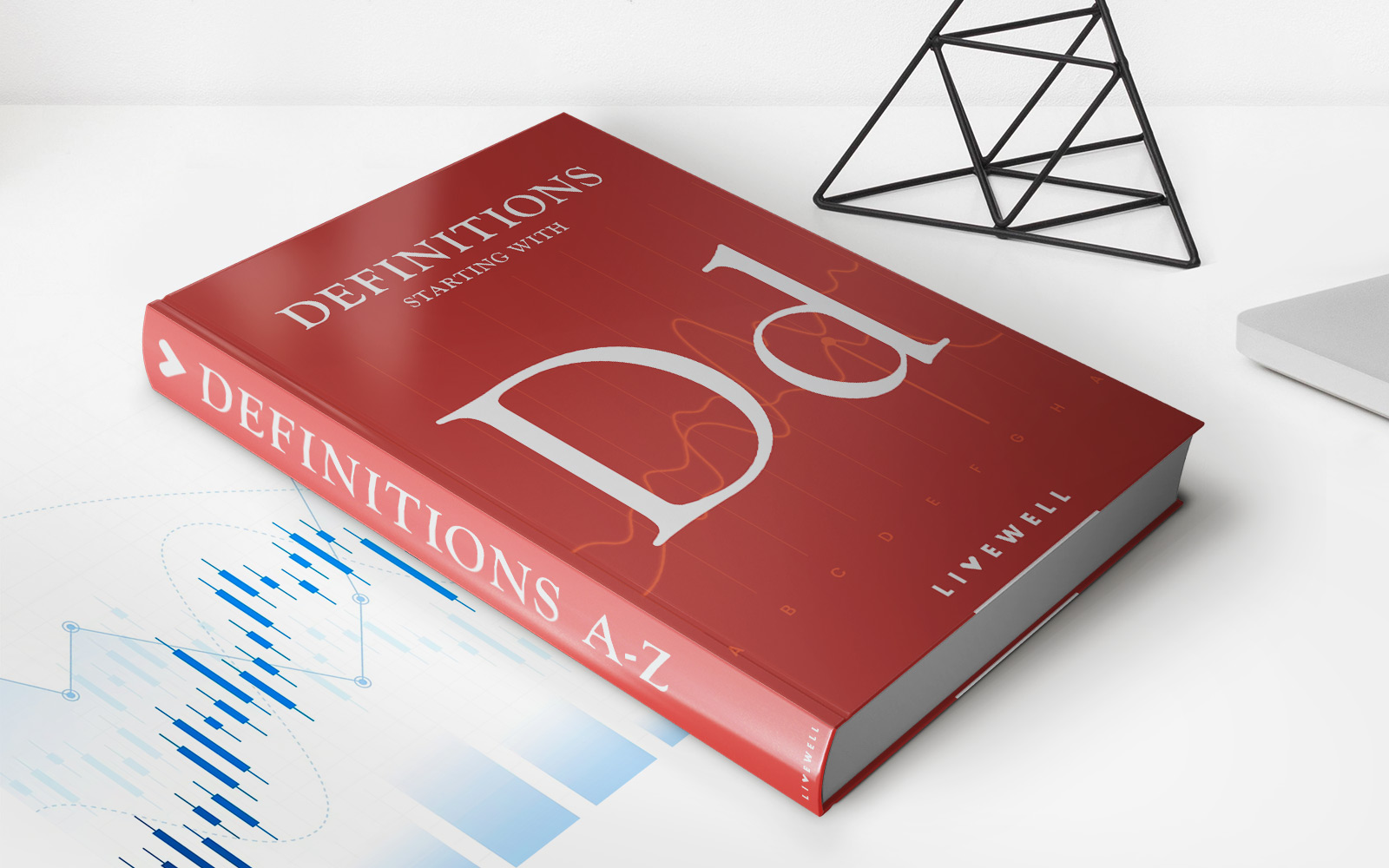Home>Finance>How To Report A 401K Rollover On Your Tax Return


Finance
How To Report A 401K Rollover On Your Tax Return
Modified: December 30, 2023
Learn how to report a 401K rollover on your tax return and maximize your finance benefits. Ensure accurate reporting for a smooth tax filing process.
(Many of the links in this article redirect to a specific reviewed product. Your purchase of these products through affiliate links helps to generate commission for LiveWell, at no extra cost. Learn more)
Table of Contents
Introduction
When it comes to your financial future, planning and understanding the intricacies of saving for retirement is essential. One popular retirement savings tool is a 401k, which allows employees to contribute pre-tax dollars to a retirement account. However, there may come a time when you need to move your 401k funds from one account to another. This is known as a 401k rollover.
But what exactly is a 401k rollover, and how does it impact your tax return? In this article, we will delve into the details of reporting a 401k rollover on your tax return, ensuring that you understand the necessary steps to stay compliant with IRS regulations.
Before we dive into the reporting process, let’s quickly touch on what a 401k rollover entails. Essentially, a rollover occurs when you transfer the funds in your 401k account to another eligible retirement account without incurring any tax penalties. This could be a traditional IRA, a Roth IRA, or even a new employer’s 401k plan.
It’s important to note that the tax treatment of a 401k rollover differs depending on the type of account you are rolling your funds into. Reporting the rollover correctly on your tax return ensures that you accurately report your income and receive any tax benefits or deductions you may be entitled to.
In the following sections, we will walk through the necessary steps to report a 401k rollover on your tax return. From gathering the required forms and documents to completing Form 1040, we will cover the process for reporting rollovers to a traditional IRA, Roth IRA, and a new employer’s 401k plan. Additionally, we’ll highlight some key considerations you should be aware of when undertaking a 401k rollover.
By the end of this article, you will have a comprehensive understanding of how to report a 401k rollover on your tax return, ensuring that you remain in compliance with IRS guidelines while maximizing the benefits of your retirement savings.
Understanding 401k Rollovers
Before delving into the details of reporting a 401k rollover on your tax return, it’s crucial to have a solid understanding of what a 401k rollover entails.
A 401k rollover is the process of moving funds from one 401k account to another eligible retirement account, such as a traditional IRA, Roth IRA, or a new employer’s 401k plan. There are several reasons why someone may choose to initiate a rollover, including changing jobs, retiring, or seeking more investment options.
One of the key benefits of a 401k rollover is that it allows you to maintain the tax-deferred status of your retirement savings. By transferring the funds directly from one retirement account to another, without withdrawing the money, you can avoid incurring any tax liabilities or penalties.
It’s important to note that there are two types of 401k rollovers: direct and indirect. In a direct rollover, the funds are transferred directly from your old 401k account to the new retirement account, such as an IRA or a new employer’s 401k plan. This is the preferred method as it eliminates the risk of withholding taxes or penalties.
On the other hand, an indirect rollover involves withdrawing the funds from your old 401k account and then depositing them into the new retirement account within a designated time frame, typically 60 days. However, with an indirect rollover, there’s a risk of incurring taxes and penalties if the funds are not deposited into the new account within the specified time limit.
Now that we have established what a 401k rollover is, let’s take a closer look at how reporting a 401k rollover on your tax return works. In the next section, we will explore the necessary forms and documents to gather before reporting the rollover.
Reporting a 401k Rollover on Your Tax Return
When it comes to reporting a 401k rollover on your tax return, the specific steps and forms you need to complete will depend on the type of retirement account you are rolling your funds into. In this section, we will go through the general process of reporting a 401k rollover and highlight some specific considerations for reporting to different types of accounts.
The first step in reporting a 401k rollover is to gather the necessary forms and documents. These can include:
- Form 1099-R: This form is typically provided by your old 401k plan administrator and reports the distribution from your 401k account.
- Form 5498: If you rolled your funds into an IRA, you may receive this form from the IRA custodian, reporting the rollover contribution.
- Form W-2: If you rolled your funds into a new employer’s 401k plan, you may need to provide your new employer with a copy of your W-2 from the previous employer.
- Form 1040: This is the main tax form that you will need to complete to report the rollover on your tax return.
Once you have gathered the necessary forms and documents, you can begin completing Form 1040, the individual income tax return form. The specific sections and lines you will need to fill out will depend on the type of retirement account you rolled your funds into.
If you rolled your 401k funds into a traditional IRA, you would report the rollover on your tax return as a non-taxable event. You will need to report the distribution from your old 401k account on Form 1040, Line 4a, and then indicate that it is a rollover on Line 4b. Additionally, if you received a Form 1099-R, you should include the information from that form on the appropriate lines of Form 1040.
On the other hand, if you rolled your 401k funds into a Roth IRA, you would report the rollover as a conversion. This means that you will need to declare the amount converted to a Roth IRA as taxable income on your tax return. Again, you would report the distribution from your old 401k account on Form 1040, Line 4a, and indicate that it is a rollover on Line 4b. You will also need to complete Form 8606 to calculate the taxable amount of the conversion.
If you rolled your 401k funds into a new employer’s 401k plan, there is no need to report the rollover on your tax return. However, it is essential to keep documentation of the rollover for your records.
It’s important to note that this is a general overview of how to report a 401k rollover on your tax return. Depending on your specific circumstances and the details of your rollover, there may be additional forms or considerations to take into account. It’s always recommended to consult a tax advisor or utilize tax preparation software to ensure accuracy and compliance with IRS regulations.
Gathering Required Forms and Documents
Reporting a 401k rollover on your tax return requires gathering the necessary forms and documents to accurately report the transaction. These forms and documents provide the information needed to ensure compliance with IRS regulations and accurately report your income. Here are the key forms and documents you will typically need:
- Form 1099-R: This form is typically provided by your old 401k plan administrator and reports the distribution from your 401k account. It includes important details such as the amount distributed, the reason for the distribution (rollover), and any taxes withheld.
- Form 5498: If you rolled your funds into an Individual Retirement Account (IRA), you may receive this form from the IRA custodian. It reports the rollover contribution made to the IRA. Make sure to keep this form for your records as it provides important documentation for the rollover.
- Form W-2: If you rolled your funds into a new employer’s 401k plan, you may need to provide your new employer with a copy of your W-2 from the previous employer. This is to ensure proper reporting of your rollover contribution and to ensure that your new employer accurately tracks your retirement plan contributions.
- Form 1040: This is the main tax form that individuals use to report their income and deductions. It is where you will report the rollover’s details and any additional information related to the rollover.
When gathering these forms and documents, it’s essential to make sure that the information provided is accurate and matches the records of your 401k rollover. Any discrepancies could potentially result in IRS inquiries or delays in processing your tax return.
It’s also important to keep these forms and documents for your records. The IRS may request verification or documentation of a 401k rollover, so having the necessary paperwork readily available will help ensure that you can provide the required information if needed.
Additionally, it’s a good practice to keep copies of your past tax returns, as well as any other supporting documents related to your retirement accounts, such as account statements and transaction records. These records can serve as a comprehensive history of your retirement savings and help you stay organized when it comes time to file your tax return.
By gathering the required forms and documents, you will be well-prepared to accurately report your 401k rollover on your tax return. Ensuring the accuracy and completeness of your reporting will not only help you avoid any potential issues with the IRS but also provide you with peace of mind that your tax return is in order.
Completing Form 1040
Form 1040, also known as the U.S. Individual Income Tax Return, is the main tax form used to report your income and deductions. When it comes to reporting a 401k rollover on your tax return, completing Form 1040 accurately is crucial. Here’s a step-by-step guide on how to complete Form 1040 for your 401k rollover:
- Personal Information: Fill in your personal information, including your name, address, and Social Security number. Ensure that this information is accurate and up to date.
- Filing Status: Indicate your filing status, such as single, married filing jointly, or head of household. Choose the status that applies to your situation.
- Income Section: In the income section of Form 1040, you will report your total income for the year. If you received a Form 1099-R for your 401k rollover, include the distribution amount on line 4a. On line 4b, mark the “Rollover” box to indicate that the distribution is a rollover and not subject to taxation.
- Deductions Section: Proceed to the deductions section of Form 1040 and report any applicable deductions you qualify for, such as the standard deduction or itemized deductions. Keep in mind that a 401k rollover itself is not eligible for deductions, but other deductions, such as mortgage interest or charitable contributions, may still apply to you.
- IRA Section (if applicable): If you rolled your 401k funds into a traditional IRA, you may need to complete additional sections of Form 1040, such as Form 8606. Consult the specific instructions for these sections to accurately report the taxable amount of the conversion.
- Tax Credits: Check if you qualify for any tax credits and report them accordingly on Form 1040. Tax credits can help reduce your overall tax liability and potentially increase your refund.
- Payments and Refunds: Finally, report any tax payments you made throughout the year, such as estimated tax payments or tax withholding from your paycheck. This will determine whether you owe additional taxes or are eligible for a refund.
It’s worth noting that the instructions for completing Form 1040 can change from year to year, so it’s crucial to consult the most recent instructions provided by the IRS when preparing your tax return.
When reporting your 401k rollover on Form 1040, accuracy is key. Double-check all the numbers and ensure that they match the information provided on your Form 1099-R and other relevant documents. Filing an accurate and complete tax return not only helps you comply with IRS regulations but also avoids potential issues or delays in processing your return.
If you are unsure about how to complete Form 1040 or need assistance with your tax return, consider consulting a tax professional or utilizing tax preparation software. These resources can guide you through the process and help ensure that you accurately report your 401k rollover on your tax return.
Reporting Rollovers to a Roth IRA
If you have rolled your 401k funds into a Roth IRA, reporting the rollover on your tax return involves a slightly different process compared to other types of retirement accounts. In this section, we will walk you through the steps to report a rollover to a Roth IRA on your tax return.
First and foremost, it’s essential to understand that a rollover to a Roth IRA is considered a conversion. This means that you will need to declare the amount converted as taxable income on your tax return.
When reporting a rollover to a Roth IRA on your tax return, follow these key steps:
- Form 1099-R: Start by obtaining Form 1099-R from your former 401k plan administrator. This form reports the distribution from your 401k account and provides important details for reporting the rollover.
- Form 1040: On Form 1040, report the distribution from your 401k account on line 4a as taxable income. Indicate that it is a rollover on line 4b.
- Form 8606: Complete Form 8606, titled “Nondeductible IRAs,” to calculate the taxable amount of the conversion. This form helps determine the portion of the conversion that is subject to income tax. You will need to accurately fill out Part II of the form and follow the instructions to calculate your taxable conversion amount.
- Tax Payment or Refund: Calculate your tax liability based on the taxable amount of the conversion and any other income you have for the tax year. Ensure that you make a tax payment if necessary or determine if you are eligible for a refund.
Reporting a rollover to a Roth IRA correctly is crucial to avoid any penalties or errors on your tax return. Make sure to review your completed Form 1040 and Form 8606 to ensure accuracy and compliance with IRS regulations.
It’s important to note that, once the funds are in a Roth IRA, any future qualified distributions from the account are typically tax-free. This can provide significant tax advantages in retirement.
If you are unsure about the reporting requirements or calculations for a rollover to a Roth IRA, it is highly recommended to seek guidance from a tax professional or utilize tax preparation software. These resources can provide specific instructions and help ensure that you accurately report your rollover to a Roth IRA on your tax return.
Reporting Rollovers to a Traditional IRA
If you have rolled your 401k funds into a traditional IRA, reporting the rollover on your tax return is a straightforward process. In this section, we will guide you through the steps to report a rollover to a traditional IRA on your tax return.
When reporting a rollover to a traditional IRA on your tax return, follow these key steps:
- Form 1099-R: Obtain Form 1099-R from your former 401k plan administrator. This form reports the distribution from your 401k account and provides crucial information for reporting the rollover.
- Form 1040: On Form 1040, report the distribution from your 401k account on line 4a as taxable income. Indicate that it is a rollover on line 4b.
- IRA Contribution: On Form 1040, report your contribution to the traditional IRA on line 17. This amount should match the amount rolled over from your 401k account.
By reporting the rollover as a non-taxable event on your tax return, you ensure that you do not pay taxes on the funds transferred from your 401k to a traditional IRA. It’s important to accurately report the rollover to maintain compliance with IRS regulations.
Reporting a rollover to a traditional IRA correctly on your tax return is crucial to avoid any penalties or discrepancies in your tax filing. Be sure to review your completed Form 1040 to ensure that you accurately report the distribution and rollover.
Another essential consideration when rolling over funds to a traditional IRA is to be aware of any contribution limits. While rollovers are not subject to contribution limits, it’s important to understand the IRS rules regarding contributing to a traditional IRA alongside the rollover. It’s advisable to consult the IRS guidelines or seek professional advice if you have any questions about contribution limits.
If you are uncertain about the reporting requirements or need assistance with calculating the rollover amount, consider consulting a tax professional or utilizing tax preparation software. These resources can provide specific instructions and help ensure that you accurately report your rollover to a traditional IRA on your tax return.
By correctly reporting your rollover to a traditional IRA on your tax return, you can ensure compliance with IRS regulations and avoid unnecessary complications with your tax filing.
Reporting Rollovers to a new Employer’s 401k Plan
If you have rolled your 401k funds into a new employer’s 401k plan, reporting the rollover on your tax return is not necessary. Unlike rollovers to an Individual Retirement Account (IRA), reporting a rollover to a new employer’s 401k plan does not require any specific reporting on your tax return.
When you roll over your 401k funds to a new employer’s plan, the process typically involves directly transferring the funds from your previous 401k account to the new plan. The direct transfer ensures that the rollover is not treated as a taxable event.
While reporting the rollover on your tax return is not required, it’s still important to keep documentation of the rollover for your records. This can include statements from your previous 401k plan and confirmation of the rollover into the new plan.
When you receive your annual Form W-2 from your new employer, it may show the rollover contribution to the new 401k plan in the “Retirement Plan” box. This information is primarily for your records and may help you track your contributions to the new plan.
It’s essential to review the Form W-2 provided by your new employer to ensure that it accurately reflects the rollover contribution. If there are any discrepancies, reach out to your employer’s benefits or HR department for clarification or correction.
While the reporting process for a rollover to a new employer’s 401k plan is relatively straightforward, it’s prudent to consult with a financial advisor or tax professional to ensure you understand any specific rules or requirements related to your particular situation.
Remember to keep all documentation related to the rollover, including account statements, transaction records, and Form W-2, for future reference and as part of your overall financial record keeping.
By properly executing and documenting the rollover to a new employer’s 401k plan, you can ensure that your retirement savings remain intact and continue to grow within the new plan.
Additional Considerations
While understanding the process of reporting a 401k rollover on your tax return is essential, there are some additional considerations to keep in mind to ensure a smooth and accurate reporting process. Here are a few key factors to consider:
- Tax implications: While rollovers to traditional IRAs and new employer’s 401k plans are generally not taxable events, rollovers to Roth IRAs are considered conversions and may have tax implications. It’s important to be aware of the potential tax consequences of your rollover and consult with a tax professional if you have any questions.
- Time limits: If you are executing an indirect rollover, where you receive the funds from your old account before depositing them into the new account, there are time limits to be aware of. Generally, you have 60 days to complete the rollover to avoid taxes and penalties. Ensure that you complete the process within the specified timeframe to ensure tax-free treatment.
- Record keeping: It is crucial to maintain accurate records of your 401k rollover, including forms such as 1099-R, 5498, and any relevant account statements. These records will help support the accuracy of your tax return and provide documentation if the IRS ever requests verification.
- Contributions and limits: While completing a rollover, it’s essential to stay informed about contribution limits for IRAs and employer-sponsored retirement plans. Note that many rollovers, including transfers to traditional IRAs, do not count towards contribution limits, but it’s still important to monitor and track your contributions to stay within the IRS guidelines.
- Professional guidance: If you have any concerns, uncertainties, or complexities surrounding a 401k rollover and reporting it on your tax return, it’s always advisable to seek professional guidance from a tax advisor or financial planner. They can provide personalized advice based on your unique financial situation and ensure compliance with IRS regulations.
By considering these additional factors and staying well-informed, you can navigate the process of reporting a 401k rollover on your tax return with confidence. It’s crucial to understand the rules and requirements specific to your situation, as well as to keep accurate records and seek professional assistance if needed.
Remember, reporting a 401k rollover correctly on your tax return ensures compliance with IRS regulations and helps you maximize the benefits of your retirement savings, setting you on the path towards a secure financial future.
Conclusion
Reporting a 401k rollover on your tax return is an important step in ensuring compliance with IRS regulations and accurately reflecting your financial transactions. Understanding the process and being aware of the specific requirements for reporting rollovers to different types of retirement accounts is crucial for a smooth tax-filing experience.
In this article, we covered the basics of 401k rollovers and discussed how to report them on your tax return. We explored the necessary forms and documents, such as Form 1099-R and Form 5498, that you need to gather when reporting a rollover. We also provided guidance on completing Form 1040, the main tax form, and highlighted specific considerations for reporting rollovers to traditional IRAs, Roth IRAs, and new employer’s 401k plans.
Additionally, we discussed important considerations, such as the tax implications and time limits associated with rollovers, the importance of record-keeping, and the need to stay informed about contribution limits. We recommended seeking professional guidance if needed and emphasized the significance of accurately reporting your rollover to maintain compliance and maximize the benefits of your retirement savings.
As you navigate the process of reporting a 401k rollover on your tax return, it’s important to stay informed, retain accurate records, and seek assistance from tax professionals or financial advisors as necessary. With proper understanding and attention to detail, you can ensure a smooth tax-filing process and make the most of your retirement savings.
Remember, reporting a 401k rollover correctly not only helps you avoid penalties but also allows you to stay on top of your financial obligations and benefits. By taking the time to understand the process and seek guidance when needed, you are taking an important step towards financial security in your retirement years.














